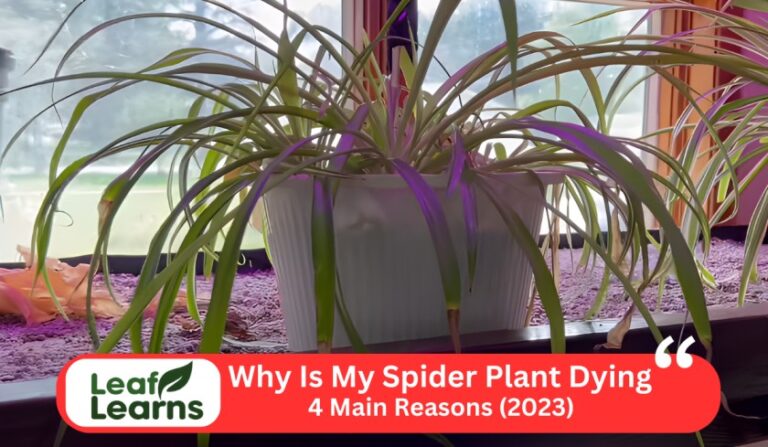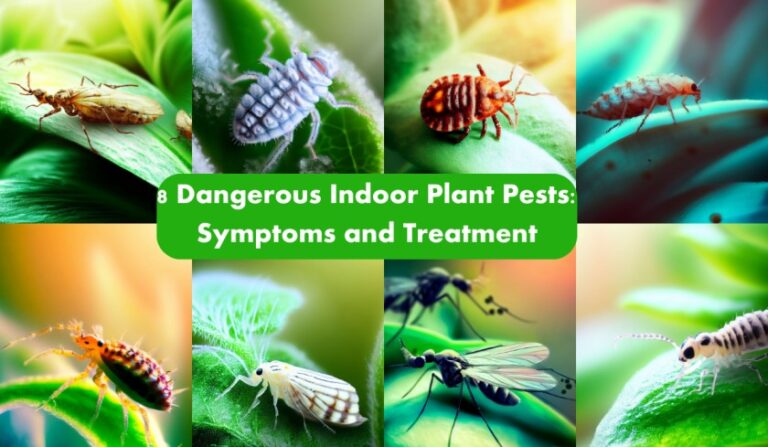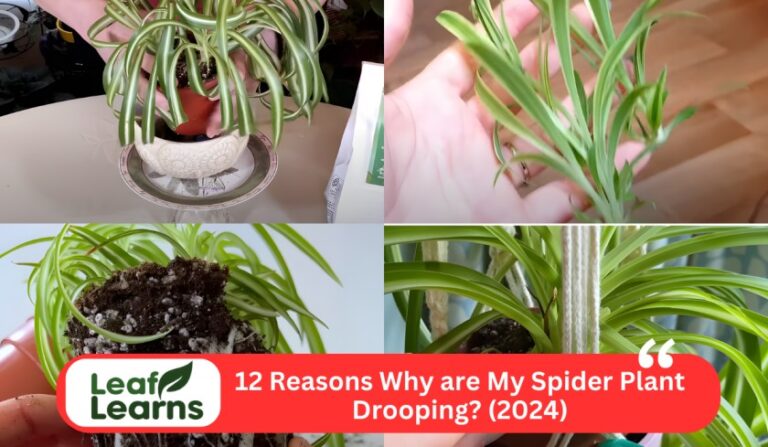Why Are My Mint leaves turning yellow? – Leaflearns (2024)
Over-watering or under-watering can cause met mint leaves turning yellow. Mint loves moist but well-drained soil. If you water too much, diseases such as leaf diseases and root rot can arise.
Yellow mint leaves may be an indication of inadequate water supply or over-watering. Other causes are the lack of nitrogen, excess sunlight, insect pests or diseases from fungi and bacteria. By monitoring water level, sunlight exposure, and pest prevention your mint leaves will stay green and healthy.
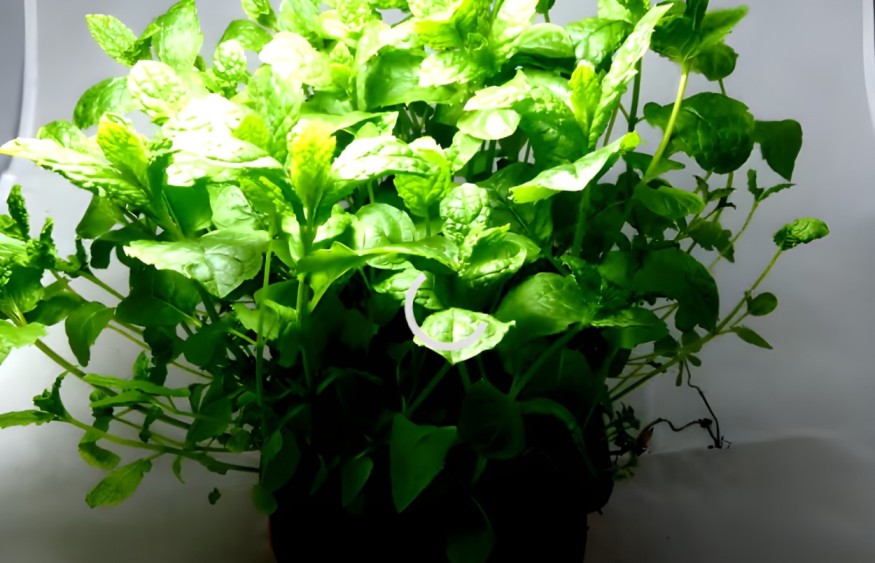
Contents
- 1 Causes of mint leaves turning yellow
- 1.1 Overwatering
- 1.2 Underwatering
- 1.3 Nutrient deficiency
- 1.4 Fertilizer
- 1.5 Soil pH
- 1.6 Excessive Sunlight
- 1.7 Verticillium Wilt Fungus
- 1.8 Aphids
- 1.9 Spider Mite Infestation
- 1.10 Quality of Soil and Water
- 1.11 Powdery Mildew
- 1.12 Mint Rust and Fungal Attack
- 1.13 Using Too Small Containers
- 1.14 Confined Roots
- 1.15 Natural aging
- 2 How does one save the mint leaves from turning yellow?
- 3 Unraveling the Botanical Enigma: The Tale of a Troubled Mint Plant
- 4 Conclusion
- 5 FAQs
- 5.1 Why are my mint leaves turning yellow?
- 5.2 What deficiency causes yellow leaves?
- 5.3 Can yellow leaves turn green again?
- 5.4 Can we eat yellow mint leaves?
- 5.5 Why are my mint leaves turning white?
- 5.6 What is the importance of mint leaves?
- 5.7 What does Overwatered mint look like?
- 5.8 Why are my mint leaves turning yellow during winter?
- 5.9 Why do the leaves of the mint plant start to fall off?
- 5.10 Are there any symptoms of rust on mint leaves?
- 5.11 What to do when mint leaves turn yellow?
Causes of mint leaves turning yellow
Overwatering
Have those once lively mint leaves turning yellow? Overwatering might be the culprit. Excessive love in the form of a watering can flood the roots, thus depriving them from much-needed oxygen.
However, the extra moisture interferes with nutrient absorption leading to the undesirable yellowing phenomenon.
How to Fix It
Stratagem up your mint buddies. First, make sure the soil dries completely between watering periods to give the roots some respite. In order to avoid waterlogged soil, provide adequate drainage in the pot.
Lower your watering cycles, giving a deep soak when the top inch of the soil has dried out.
Underwatering
The causes however become clearer, if your mint leaves are not so palatable yellow color and they have been underwatered.
Mint is a herb that constantly requires water, so not providing enough hydration will cause stress and discoloration.
How to Fix It
Return to your mint the vibrant green color of its glory by changing the watering schedule. Make sure that the soil is moist, but not wet. Water when the top inch feels dry.
Mulch around the plant helps retain moisture. For container plants, use a well-draining potting mix.
Nutrient deficiency
Have you ever seen your beautiful dazzling mint leaves turning yellow? The suspect might be a nutrient deficiency. The lack of essential nutrients such as nitrogen, iron, or magnesium turns leaves yellow.
This happens since the plant fails to produce chlorophyll which is essential in photosynthesis.
How to Fix It
To restore the vigor of your mint, deal with the nutrient deficiency. Start with a complete fertilizer that has high content of nitrogen, phosphorus and potassium.
Use organic materials such as compost to enhance the nutritional content. Water regularly to keep the soil constantly moist.
Fertilizer
If you have lively mint leaves getting disheartened due to a yellow color caused by some villain, your fertilizing regime may be the one.
If this equilibrium is upset by overfeeding or underfeeding, too much or too few nutrients can result. Mint requires balanced fertilization in order to flourish.
How to Fix It
In order to save your mint from its yellow plight, rethink the manner in which you fertilize. Choose the type of fertilizer that is soluble in water and has an N-P-K ratio of 10-10-10.
Use it every four to six weeks in the growing season. Make sure that the ground is well-draining to avoid waterlogged roots.
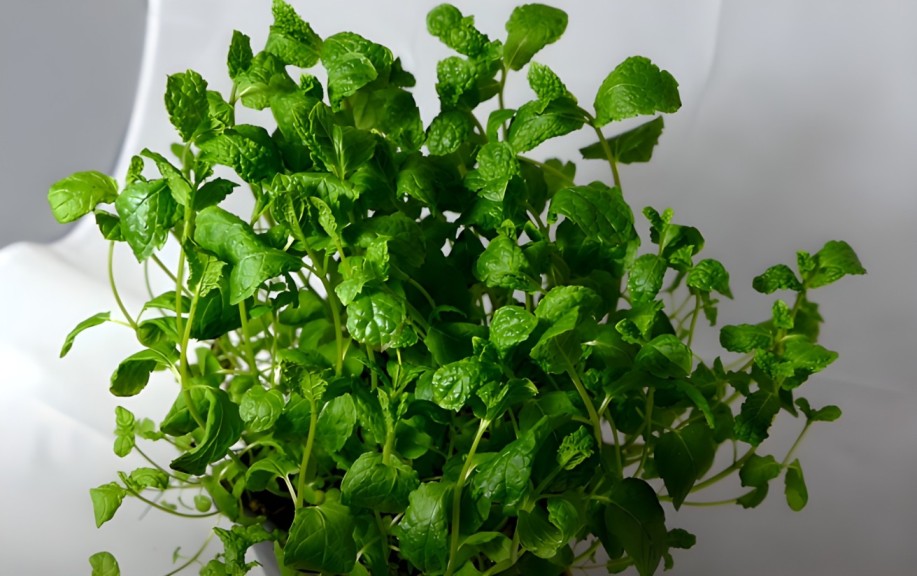
Soil pH
Does your lively mint leaves turning yellow? your soil’s pH can be blamed in this case.
Mint performs better in slightly acidic to neutral soil; any shift from the set balance might lead to discoloration. Due to poor nutrient assimilation, if a pH lower than 6.0 or higher than 7.0 is present, leaves become yellow.
How to Fix It
With a simple soil pH adjustment, reviving your mint is an easy-going process. First, do a soil test using an inexpensive pH kit available from garden centers.
To reduce pH, incorporate organic matter such as compost or use sulfur. For elevating pH, incorporate lime.
Excessive Sunlight
Mint leaves turning yellow have you ever stopped to think? It could be too much sunlight.
And although mint thrives in full sun, too much sunlight can be stressful and cause yellowing leaves.
How to Fix It
In order to save your mint from the sun’s excessively warm embrace, try changing it into a part shade location. Mint is best grown in full sun and lasts for about 4 to 6 hours per day.
Protect it from the heat of the afternoon. Water well-drained soil consistently to provide moisture while preventing the roots from drowning.
Verticillium Wilt Fungus
Have you ever wondered why the colorful mint leaves turning yellow? A potential suspect is Verticillium Wilt Fungus.
This soil-borne pathogen invades the plant, impeding water movement and creating dreadful yellow colors. Early detection of symptoms is often critical for preserving your mint garden.
How to Fix It
This fungus has to be fought on two fronts. Firstly, establish good hygiene by disposing of the affected plants in an appropriate manner.
Further, improves the soil quality by adding well-rotted organic matter.
Aphids
Ah, is it those annoying little aphids that cause your vibrant mint leaves turning yellow? These small sap-feeding insects are capable of leading to significant damage on your plants leaving them yellowish and stunted.
How to Fix It
Soapy Solution: Prepare a gentle soap solution and spray on the leaves that have been infested. This disrupts aphid feeding.
Neem Oil: Use neem oil, a natural insecticide, as a repellent and protect your mint from aphids.
Beneficial Insects: Add ladybugs or lacewings, natural prey on aphids.
Spider Mite Infestation
If you’ve noticed your vibrant mint leaves turning yellow, a hidden enemy might be at play: Spider Mite Infestation.
The underside of the leaves is where these tiny arachnids do well and they pierce cells there and suck nutrients making your mint to weaken and stay discolored.
How to Fix It
Two approaches are required to combat a Spider Mite Infestation. Initially, use predatory insects such as ladybugs or adopt neem oil which is a natural repellant.
Secondly, eliminate infected leaves by getting rid of them to prevent further transmission. Misting leaves with water on a regular basis is another means of preventing mites.
Quality of Soil and Water
The color of your mint leaves can lose its vibrant green appearance because of bad soil and water conditions. Yellow leaves could indicate nutritional problems or bad drainage.
Poor soil does not have the necessary elements for mint health. Similarly, poor pH or mineral-rich water can cause nutrient absorption inhibition.
How to Fix It
Enhance your mint by improving soil and water quality. Test your soil’s pH and amend it with organic matter. Give a proper drainage supply to avoid waterlogging.
To prevent mineral deposits, use treated or rainwater. Apply a balanced fertilizer to restore nutrient levels.
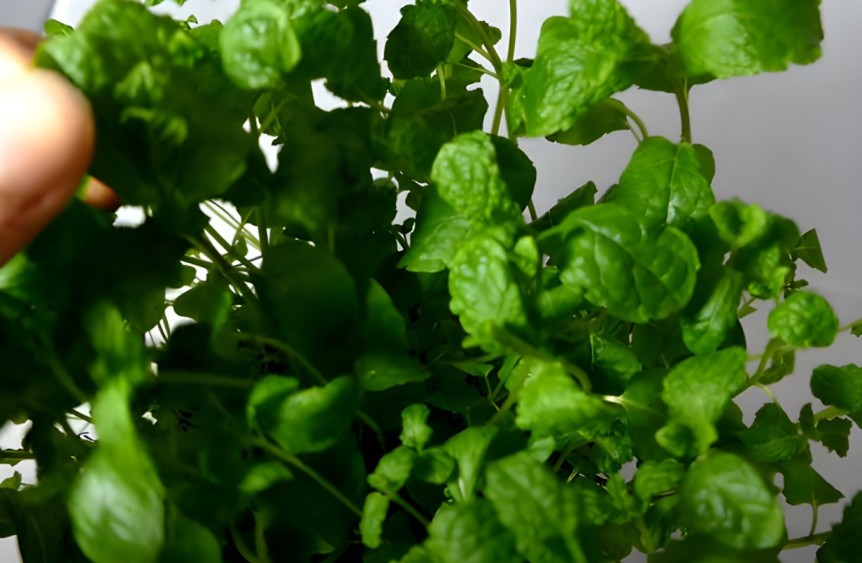
Powdery Mildew
However, if the vibrant leaves of your mint suddenly change their color to yellow, the notorious Powdery Mildew might be the guilty party.
This widespread fungal disease prefers warm and dry environments and it appears in the form of a white powdery substance on the leaves. The plant is weakened, and yellowing occurs when Powdery Mildew blocks photosynthesis.
How to Fix It
Act Swiftly: When there is the first sign, cut down infect leaves to prevent further spread.
Spray with Baking Soda Solution: Mix water, baking soda, and dish soap. Spray on leaves weekly.
Increase Air Circulation: This will ensure adequate air circulation around the plants, preventing mildew growth.
Neem Oil Magic: Powdery mildew can be controlled well using a natural fungicide, the neem oil.
Mint Rust and Fungal Attack
Yellowing mint leaves are often attributable to Mint Rust and Fungal Attack. Mint Rust, a fungal disease, appears as orange-brown speckling on the underside of the plant weakens it.
How to Fix It
Prune Affected Parts: Cut off diseased leaves to stop the spreading and promote healthier growth.
Improve Air Circulation: Provide proper ventilation to decrease the relative humidity; one of the major requirements for fungal growth.
Watering Techniques: Avoid overhead watering, which leads to saturated conditions.
Natural Fungicides: As eco-friendly fungicidal treatments, use neem oil or a combination of baking soda and water.
Using Too Small Containers
Are your bright mint leaves not green anymore? The offender could in fact be lying under their feet on your receptacles. A rapid spreader, mint needs to extend its roots.
Small pots constrain growth, as shown by yellow leaves. The inadequacy of space hinders nutrient uptake and water retention leading to stress in your mint plant.
How to Fix It
Opt for a larger container(12 inches or more), to allow your mint plant to grow. Make sure that it has a good drainage system to prevent waterlogging. Plant your mint in soil that is high in nutrient values causing growth.
Confined Roots
Confined roots can cause yellow in your mint leaves. As we do, plants need room to grow. When mint grows beyond its pot, the roots become smothered and nutrient uptake is incapacitated. This causes the leaves turn yellow, which is a sign of distress in your herb.
How to Fix It
Replant your mint into a bigger pot and you will renew it. Gently loosen the roots and allow enough space for growth.
Select a potting mix that drains well so oxygen can reach the roots. Water regularly, allowing the water to drain away through the holes in its bottom.
Natural aging
The process of aging will naturally occur as your lively mint plant grows, and its leaves may turn yellow. This is a common feature in the herbs life cycle. As with any living organism, the mint plant changes color and elasticity throughout its life.
How to Fix It
Nurture your drooping mint leaves by regular pruning. Prune away older leaves that have turned yellow or brown, so the plant will channel its energy into new growth.
Provide enough light, for mint grows well in partial shade. Assess the nutrient balance of the soil and consider adding a balanced fertilizer.

How does one save the mint leaves from turning yellow?
Provide them with plenty of sunlight
It is, therefore, important to ensure that your mint leaves receive enough sunlight to retain their green color.
Mint likes sunny places, so find an appropriate location for it and ensure that your plant gets at least 6 hours of sunlight every day. This encourages healthy development as well as prevents yellowing.
Make sure to let the soil dry
One of the main reasons for yellow mint leaves is over-watering. Water the soil after it has dried. Prevent root rot by ensuring adequate drainage because waterlogged roots cause yellowing leaves.
It is advisable to follow a regular watering routine and adapt according to the demands of different plants.
Solve the problems
Integrate early addressing of problems to make your mint healthy. It can, however, follow nutritional deficiencies or imbalances. Feed your plant a balanced fertilizer regularly. Monitor for symptoms of diseases or infections and administer treatment as needed.
Trimming is important
Prune your mint plant often to keep it robust and prevent long stems. Discard the leaves that become yellow or damaged and trim the plant to keep it bushy and compact. Not only does this make the plant look better but also directs energy towards healthy leaves.
Due to the pest issues
Prevent yellowness in your mint by fighting pest issues. Watch out for conventional pests such as aphids or spider mites.
Essentially, apply natural remedies or insecticidal soap to discourage pests without ruining your mint and making it flavorless. Inspect your plant frequently to identify and correct pest problems in the early stages.
Unraveling the Botanical Enigma: The Tale of a Troubled Mint Plant
The lush greenery of my once vibrant mint plant has succumbed to a series of perplexing issues, forming a narrative of its own. The journey begins with the distressing sight of mint leaves turning yellow and brown, prompting an investigation into the intricate world of mint plant care.
Questions echo through my mind, pondering why my mint plant leaves are turning yellow, and even more perplexingly, why are they adorned with brown spots? This introspection extends to broader concerns, delving into the realm of general plant issues such as yellow leaves on plants and the more specific plight of leaves turning yellow on my mint plant.
The saga continues with an exploration of color changes in mint leaves, where the once verdant foliage takes on hues of dark yellow, violet, and red, creating a kaleidoscope of uncertainty.
As I navigate the maze of potential causes, from mint leaves turning endlessly yellow to the intriguing phenomenon of mint leaves turning yellow during flowering, I find myself yearning for a solution to remedy the yellowing of these precious leaves.
In the midst of this botanical enigma, miscellaneous keywords like mint leaves in different languages, emojis, and the intriguing prospect of turning mint leaves into 3D prints add a touch of whimsy to the narrative. Yet, the central mystery remains why is my mint turning yellow, and how can I restore its former glory?
Conclusion
Upkeeping the bright green attraction of your mint leaves demands patience and careful control. A solution to these two common offenders is ensuring that the soil dries out between watering sessions and providing adequate drainage.
Timely solutions to issues like nutrient deficiencies or imbalances are necessary for a healthy mint garden.
FAQs
Why are my mint leaves turning yellow?
There are several reasons why mint leaves might become yellow, including pests, infections, nutritional deficits, and overwatering.
What deficiency causes yellow leaves?
Plants with yellow leaves may be deficient in certain nutrients, most typically nitrogen, iron, or magnesium.
Can yellow leaves turn green again?
Yellow leaves may occasionally turn green again if the underlying problem—such as a nitrogen shortage or poor maintenance is quickly resolved.
Can we eat yellow mint leaves?
Although yellow mint leaves are normally safe to consume, they may taste somewhat different and may be a sign of stress or a medical condition in the plant.
Why are my mint leaves turning white?
Powdery mildew is a fungal illness that causes mint leaves to turn white. It manifests as a white, powdery material on the leaves.
What is the importance of mint leaves?
Mint leaves are prized for their cooling taste as well as their many health advantages, which include lowering inflammation, promoting better digestion, and offering antioxidants.
What does Overwatered mint look like?
Symptoms of overwatering mint include yellowing leaves, wilting, and root rot. The roots lose oxygen as a result of the soggy soil.
Why are my mint leaves turning yellow during winter?
Wintertime temperatures, less sunshine, and the plant’s natural slowing down of metabolic activities can all cause mint leaves to become yellow.
Why do the leaves of the mint plant start to fall off?
Pests, illnesses, overwatering, and environmental stressors can all cause mint leaves to drop off. Leaf drop may be avoided by taking good care of the plant and quickly resolving any problems.
Are there any symptoms of rust on mint leaves?
On mint leaves, rust typically manifests as orange-brown dots on the undersides of the leaves. If left untreated, this fungal illness has the potential to weaken the plant.
What to do when mint leaves turn yellow?
When the leaves of mint turn yellow, look for pests, nutritional deficits, or overwatering. To restore the health of the plant, make appropriate fertilizer adjustments, watering adjustments, and address any underlying problems.

